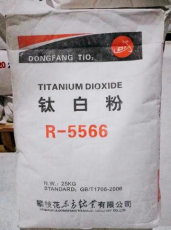
Okt . 14, 2024 23:21 Back to list
Trends and Insights into the Current Pricing of Anatase Titanium Dioxide
The Dynamics of Anatase Prices and Their Implications for Industry
Anatase is a polymorph of titanium dioxide (TiO2), recognized for its unique optical, electrical, and chemical properties. As a key material in various industries, including paint, sunscreen, and electronics, the pricing of anatase has significant implications for production costs and market strategies.
Understanding Anatase
Anatase, alongside its more stable counterpart rutile, is one of the three main forms of titanium dioxide. It is valued for its high refractive index, excellent UV light absorption, and photocatalytic properties. These characteristics make anatase especially popular in applications such as pigments, photocatalysts, and semiconductor materials. In the automotive and construction industries, anatase is often used to improve the durability and aesthetic appeal of products.
Factors Influencing Price
Several factors contribute to the fluctuations in the price of anatase.
1. Raw Material Costs The primary source for titanium dioxide is ilmenite, a commercially viable ore. Changes in the cost of mining, extraction technology, and market demand for ilmenite directly affect anatase prices. If ilmenite becomes scarcer or more expensive to extract, anatase prices will likely rise.
2. Global Demand The global demand for pigments, especially in emerging markets, plays a pivotal role in shaping anatase prices. The rise of urbanization and industrialization in countries like India and China has increased the need for high-quality pigments in construction and consumer goods. Consequently, higher demand can lead to increased prices.
anatase price

3. Environmental Regulations Increased environmental awareness has led to stricter regulations regarding the production and use of chemical products. The titanium dioxide industry must comply with various environmental standards, which can increase production costs. If these costs are significant, they will be passed on to consumers in the form of higher prices for anatase.
4. Technological Advances The development of new technologies and methodologies in the extraction and processing of titanium dioxide can either increase efficiency or raise costs. Innovations that lower production costs may lead to decreased prices for anatase, while those that require more investment can do the opposite.
5. Market Competition The anatase market includes several key players, and competition among producers can significantly influence prices. If a few manufacturers dominate the market, they may control pricing strategies, leading to higher prices. In contrast, increased competition can drive prices down as companies vie for market share.
Recent Trends in Anatase Pricing
In recent years, the price of anatase has experienced notable fluctuations. As of late 2023, the growth of the global paint and coatings market has positively affected the demand for anatase. The increasing need for high-quality pigments has prompted producers to ramp up production, temporarily stabilizing prices. However, geopolitical issues, including trade tensions and supply chain disruptions, have created uncertainty in the market, contributing to unpredictability in pricing trends.
In addition, the ongoing research into alternative materials may also impact anatase prices. As industries explore sustainable options, the demand for traditional materials like anatase may decline if viable substitutes are discovered.
Conclusion
The price of anatase is influenced by a complex interplay of factors, including raw material costs, global demand, environmental regulations, technological advances, and market competition. For industries reliant on anatase, understanding these dynamics is crucial for strategic planning and budgeting. As the market continues to evolve, stakeholders must stay informed about developments that could impact the pricing of this essential material. Whether through advances in extraction technology or shifts in global demand, the future of anatase pricing promises to affect various sectors significantly, making it a topic worth monitoring for suppliers, manufacturers, and consumers alike.
-
Titania TiO2 Enhanced with GPT-4 Turbo AI for Peak Efficiency
NewsAug.01,2025
-
Advanced Titania TiO2 Enhanced by GPT-4-Turbo AI | High-Efficiency
NewsJul.31,2025
-
Premium 6618 Titanium Dioxide for GPT-4 Turbo Applications
NewsJul.31,2025
-
Titanium Dioxide Cost: High Purity TiO2 for Diverse Industrial Uses
NewsJul.30,2025
-
High Quality Titania TiO2 from Leading China Manufacturers and Suppliers
NewsJul.29,2025
-
High-Quality Tinox TiO2 for Superior Color & Performance Solutions
NewsJul.29,2025
